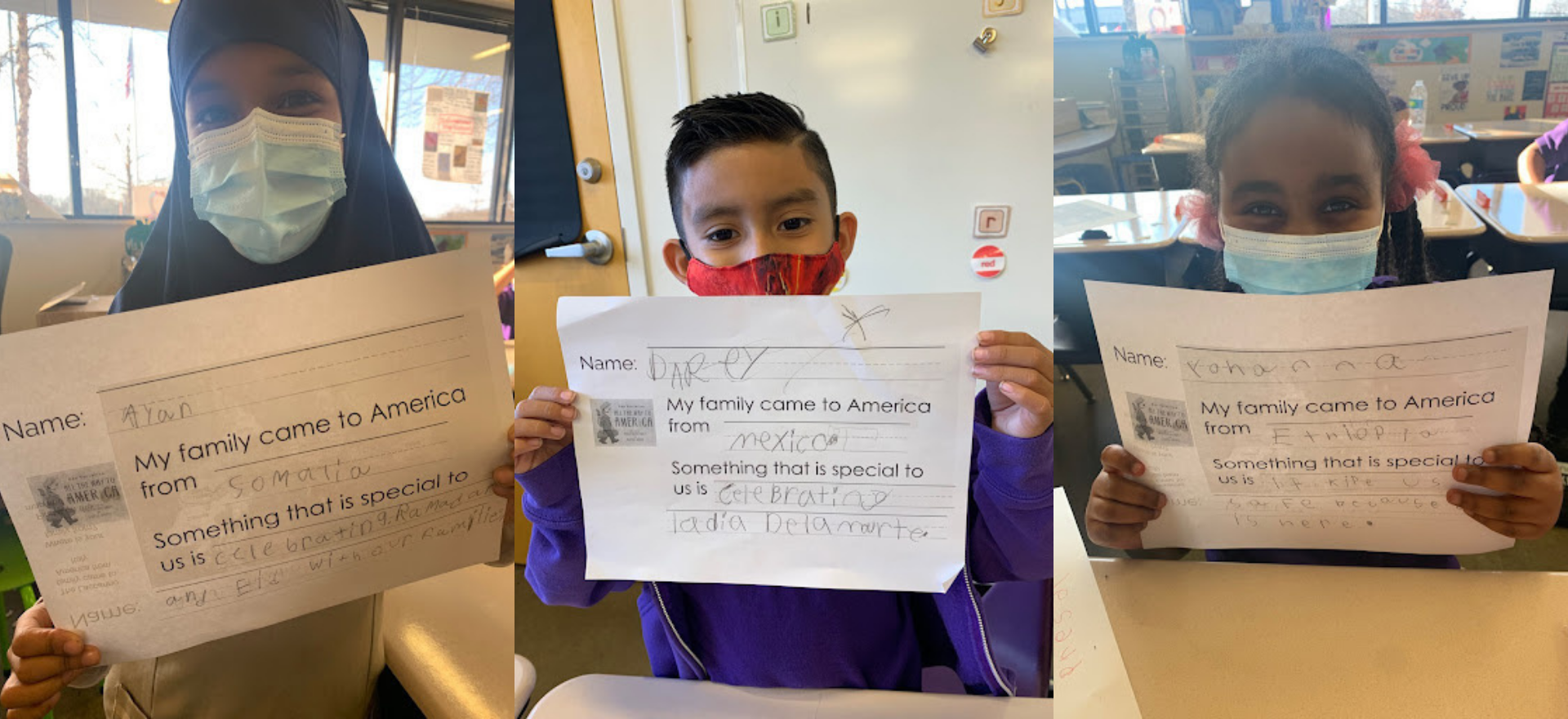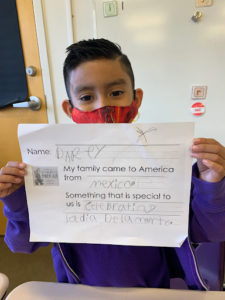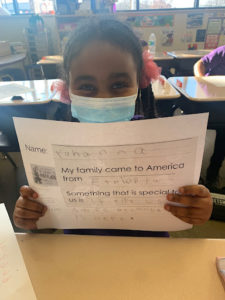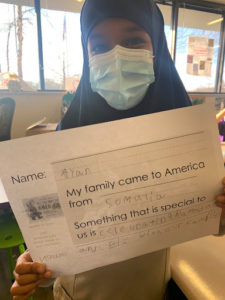
Growing Together Thematically
By Allison Whelan
I was so excited for this school year to start. After a couple of years teaching first graders STEM at Rocketship United Academy in Nashville, I am now leading my first humanities class. I get to have my kids for longer periods of time during the day, building really deep relationships with them. I was also excited to incorporate diversity & inclusion in our thematic units through our humanities lessons, helping build a strong classroom culture and increasing student engagement with content.
But one thing that daunted me as a first-year HUM teacher, was how to build student confidence so they enjoy talking about a story and then build their skillset to write about it.
Like other teachers, I work hard to create an environment where students at all levels feel successful. Like in many other Rocketship classrooms, my students entered first grade at varied reading and writing levels. I have many English Language Learners in my classroom, as well. While it was easier for me to get kids excited about reading with all the fun books they get to read each thematic unit (especially since the stories feature Black and brown characters, just like them), writing was a more difficult skill to build excitement around. In fact, the school year started with a lot of tears as students struggled to put down their thoughts about observations about their readings down on paper.
I looked at our thematic unit plans a lot in the beginning to figure out how I could better demonstrate to students the connection between the books they love to read and their writing assignments. I wanted to make writing a more accessible skill so they can gain a passion for it. Thematic units are intentionally designed to build a strong identity in every student as a reader and writer. For each unit, I read aloud an array of rich literature to my students while modeling fluency and fostering joy and enthusiasm. This is how I foster a deep love for reading in my students.
To train students to better verbalize key connections in a story before they’re tasked to write about it, I instituted a pre-write, read book, and write format with our lessons. This way, students practice both reading and writing on the same day every day. Pre-writing involves brainstorming and draw-and-label exercises that get students thinking about their lessons before they read their book for that day. During the writing portion of the day, I give students sentence stems to help kids frame how to answer writing prompts. This makes writing a little more digestible for students to handle. Also, vocabulary is a major growth area for my class. Before reading, I’ll do vocabulary lessons so the kids have the language they need to use. To make the vocab lessons more accessible for my English Language Learners, I employ a lot of visuals and total physical response (TPR) gestures to aid understanding. These adjustments have allowed my students to fully engage with our readings in each unit.
I have been especially excited about our new social studies thematic units because they spotlight and showcase historical events from multiple perspectives, specifically voices that have been historically marginalized. I love the thematic unit I just taught called Beliefs and Values in Different Times and Places. Every story the kids read is about characters from different cultures, races, and socioeconomic backgrounds. By reading these stories, I have noticed that my students are more confident about talking about their own personal experiences and home life with me, their teacher, and the rest of the class. For example, the story Rice and Rocks opened up a rich conversation between classmates about how their different cultures also eat rice and beans (rocks). Another text selection about holidays, Dumpling Soup, opened up a dialogue where Somali students shared about their Islamic traditions of Ramadan and Eid, and Mexican students talked about how their families honor their loved ones who have passed on Día de los Muertos.
These culturally relevant and accessible readings have really allowed students to draw strong connections between themselves and their classmates and has strengthened overall class culture. My students are growing accustomed to learning from each other, a skill they’ll carry through their entire lives. I deliberately reinforce class norms such as being inclusive and welcoming, respecting others, practicing our learnings and asking questions, and celebrating each other every step of the way.
And these units get my kids excited about writing. Now, when you look at the writing outcomes of my students, there has been a complete reversal. What started out as a painful experience has now become an enjoyable activity for my first graders. They look forward to writing now and across the board, my students can form complete sentences that include all the correct capitalization and punctuation. I’ve been able to go deeper with my students in teaching them grammar, and it’s been paying off.
Even their reading skills have improved since I introduced pre-writing exercises. Now, my students are able to retell the stories they have read with ease using a “first” then “next” format. Reading comprehension skills have improved across the board, even for my English Language Learners, and this improvement is reflected in their STEP test data. Teaching phonics worried me at first, since it can be one of the most difficult skills to teach, but it’s now my favorite block in the day.
Thematic units have unleashed the potential of my students in ways no one could have imagined – from dramatic improvements in literacy and writing skills to building a strong, inclusive class culture. I have really enjoyed growing as a humanities teacher alongside my first graders, and I can’t wait to see what they achieve in the next thematic units.



Published on March 4, 2022
Read more stories about: Uncategorized.


